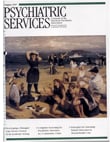Association between mood-stabilizing medication and mental health resource use in the management of acute mania
Abstract
OBJECTIVE: To better understand how mood-stabilizing agents other than lithium have changed treatment and outcomes in bipolar disorder, this study examined health service utilization among patients with acute mania who were being treated with a variety of regimens using mood stabilizers. METHODS: Demographic, clinical, and resource utilization data were collected from the records of 96 inpatients with a discharge diagnosis of bipolar mania. Patients were categorized into four major treatment groups: lithium monotherapy, anticonvulsant monotherapy, treatment with multiple mood stabilizers, and treatment with no mood stabilizers. RESULTS: The mean +/- SD age of the sample was 50 +/- 12.3 years. Lithium was the most commonly prescribed antimanic agent, with 29 of the 96 patients on lithium monotherapy, 17 on anticonvulsant monotherapy, 42 taking multiple mood stabilizers, and eight taking no mood stabilizers. The mean inpatient stay was significantly longer for patients on multiple mood stabilizers (30.3 +/- 20.7 days) than for those on lithium monotherapy (20.7 +/- 14.4 days), anticonvulsant monotherapy (17 +/- 9.3 days), and no mood stabilizers (17.3 +/- 14.4 days). Patients who were not taking a mood stabilizer had a higher rate of leaving the hospital against medical advice than the other groups. Patients on anticonvulsant monotherapy had significantly more comorbid psychiatric illnesses than patients taking multiple mood stabilizers. Inpatient use of seclusion or restraint and of concurrent antipsychotic medications did not differ significantly between the treatment groups. Compliance with outpatient follow-up was poor in all treatment groups, and almost absent in the group taking no mood stabilizers. CONCLUSIONS: Changes in the pharmacological management of acute mania will have an impact on clinical outcomes and health resource utilization.



